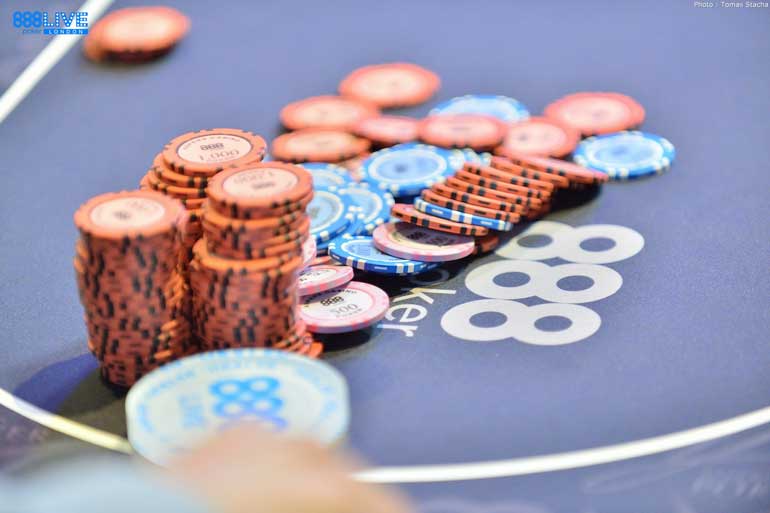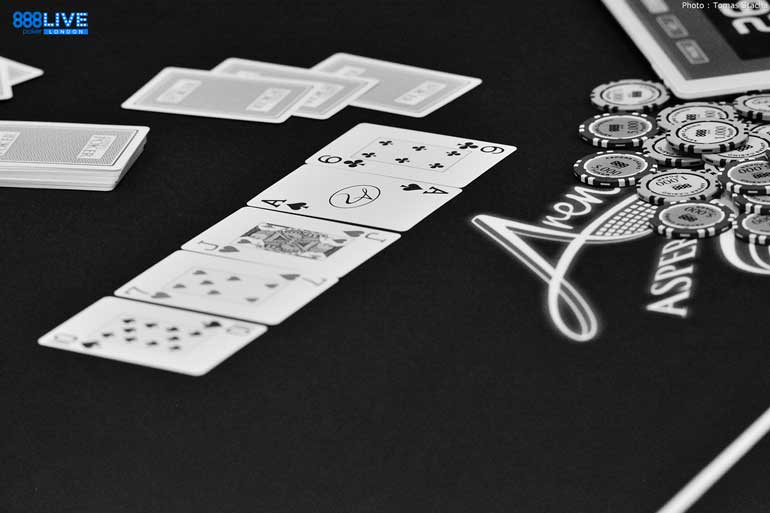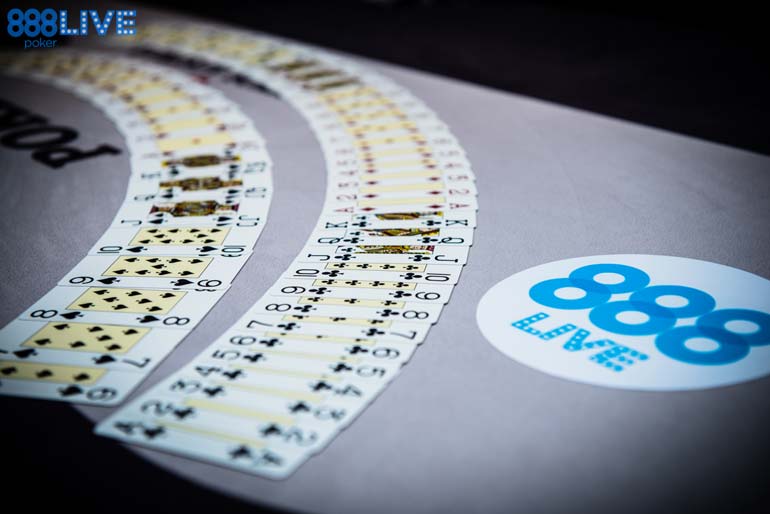5-Card Stud is not as popular now as some of the more prominent variants of poker. But it is the earliest form of Stud poker invented, dating back to the 1960s.
This format has most of its gameplay, these days, either online or in Finland with a variant called “Sökö”. But 5-Card Stud is an excellent variation of poker.
In this article, we’ll go over the following concepts –
- Rules
- Gameplay
- Hand considerations
- Basic strategy to help you get on your feet, should you choose to play this form of poker:
5-Card Stud: Rules and Gameplay
- Limit Type: 5-Card is typically played as a Fixed Limit or Spread Limit game. (This format means that the betting limits increase in later rounds of the hand.). That said, sometimes it is also in a No-Limit or Pot-Limit game.
- Players Ante Up: The “betting” usually starts with every player posting an “ante”. The first bet is a “bring-in” (described below). This setup is dissimilar to the more common practice of using blinds to kick off the betting in other poker games.
NOTE: The size of the ante is quite often significantly less than the “small bet” in a fixed-limit game. For example, if the small bet is $10, the ante might be $1.
- The Deal: Starting with the player seated to the left of the dealer button, all players receive one card facedown and one card face-up.
- The Bring-in: The player with the lowest rank of card showing MUST place forward a pre-determined bet, called the “bring-in”. This player also has an option of opening the betting with a number of chips higher than the bring-in. The bring-in is a fixed amount that is usually greater than the ante but less than the amount of the “small bet”.
NOTE: Where two or more players have the same low card face-up, suits break the tie. That the ranking order of suits for this can vary by country. That said, one of the more commonly accepted orders of suits (highest to lowest) is spades ♠ hearts ♥ diamonds ♦ and then clubs ♣.
 5-Card Stud Betting Rounds
5-Card Stud Betting Rounds
- Betting Round #1: The betting round then continues with the player seated to the direct left of the bring-in. Players may take any of the following actions:
- Call (match the amount of the bring-in)
- Complete (increase the betting to now be the amount of the “small bet”)
- Raise (increase the amount of the current bet, only if a player before them has already “completed”)
- Fold (discard their hand and not participate in future betting rounds).
If a player folds, he does so by turning his lone upcard facedown. He then mucks his cards together in the centre of the table.
NOTE: There are generally three raises accepted per betting round when multiple players are involved. When play is heads-up, sometimes an unlimited amount of raising is permitted each round.
- Dealing of 3rd Card (Face-Up): All players remaining in the hand (i.e., those who have not folded) receive another upcard. The order of the deal depends on who has the dealer button. Cards come out in a clockwise direction, starting with the player to the left of the dealer. Players should now have one card facedown still and TWO cards face-up.
- Betting Round #2: Betting Rounds #2, #3 and #4 always start with the player showing the strongest combination of upcards. Suited or connected cards are irrelevant. At this stage. they do not have any bearing when determining who has the high hand. So, pairs and high card rankings (based on the two cards showing) decide who has the best hand at this point.
NOTE: The player who starts the action from betting round to betting round can and does change. Which player starts depends on who has the highest upcards showing.
- Dealing of 4th Card (Face-Up): Remaining players now receive a third upcard. The player to the dealer's left gets their card first, and the deal continues clockwise from there.
- Betting Round #3: Another betting round takes place. Again, the action starts with the player showing the best 3-card poker hand. As before, straights and flushes don’t count. So, the best hands now will either be three-of-a-kind, one pair, or high card holdings. Note that in the fixed-limit version of 5-Card Stud, in this round, the betting amounts will double from the previous betting rounds.
- Dealing of 5th Card (Face-Up): Players receive a 4th and final upcard, leaving them with a full 5-card poker hand. Only their initial hole card remains face down and hidden.
- Betting Round #4: A final betting round takes place in the same way as the previous betting rounds.
- Showdown: Action in each hand will typically end before this stage. (A player betting or raising gets all other remaining players to fold before showdown.) But if two or more players remain after the final betting round, a showdown is reached.
At this point, the last aggressor (or the one who was first to act in the 4th betting round if both players check) expose their hidden hole card. They now reveal the strength of their full 5-card poker hand.
Continuing in a clockwise direction, the remaining players expose their entire hands if they can beat the previous one. If they cannot beat the previously shown hand, players may muck their hand without exposing their down-card to the table. The pot is awarded to the player who has the best 5-card poker hand.
 5-Card Stud Showdown
5-Card Stud Showdown
5-Card Stud: Variations
There are many variations of the classic 5-Card stud game, including (but not limited to the following:
- A version where the last card is dealt facedown (leaving a total of THREE upcards and TWO downcards for the previous betting round).
- Another involves lowball (where players try to make the lowest hand instead of the highest one).
- Sökö is a popular variant from Finland. In this version, a 4-straight and 4-flush are two additional hands added into the poker rankings below a pair.
5-Card Stud: Hands
It’s very uncommon to end up with straights and flushes in 5-Card Stud. To compare it to other forms of poker, it’s like flopping a straight or flush in Hold’em.
Subsequently, there’s unquestionable value to having high cards at the beginning of a 5-Card Stud hand. These can ultimately become strong one-pair hands by the 4th upcard if they pair up.
But more often than not, the winning hand in 5-Card Stud is going to be a mere one-pair hand!
5-Card Stud: Strategy
Here are some general strategy tips to keep in mind for 5-Card Stud:
- Position is not as crucial as in other forms of poker: The player who’s first to act will continue to change from one betting round to the next. Remember, the strength of the players upcards will continue to fluctuate with every card.
- Pay attention to the live upcards of other players: Be sure when calculating your outs to consider the cards in your opponents’ hands. See if they have (or don’t have) any of the cards you need to hit to improve.
- Try to remember the mucked exposed cards: Right from the get-go, every player has at least one card exposed. Whenever players fold in a hand, it’s essential to remember these previously exposed cards. Use this info to calculate your odds to improve more accurately.
- Play tight: Most often, you’re going to be folding your starting hands in the first betting round. Ideally, you want to have one card that, at least, beats the upcards of your opponents. (You may be able to improve to a one-pair hand beats theirs).
Anything unconnected and/or unsuited and low should usually go straight into the muck. To further expand on this, good starting hands in 5-Card Stud can include the following:
- Big unpaired cards that can make solid top-pair hands
- The more connected they are, the better!
- If they are suited, this undoubtedly adds more equity and drawing potential.
- Ideally, none of your outs of improving to a pair will be in the exposed cards of other players’ hands.
- The more connected they are, the better!
- Low pairs that don’t have one of their remaining cards exposed in another player’s upcards. (So, both outs are still possible to hit to make trips)
- Big pairs can win outright at showdown. So, you don’t always necessarily even need to improve to trips to win.
- Note that playing with suited connectors in late position and/or after many players have already called can be profitable. Remember that suited connectors will not be as strong as Hold’em or Omaha, where it’s best-of-seven cards.
- With only 1-2 players left to act, it can be acceptable in an unopened pot to “complete” with a much broader range. Try to steal the antes and bring-in using this strategy.
- Big unpaired cards that can make solid top-pair hands
- Play aggressive: Bluffs and semi-bluffs will be much more common and effective in 5-Card Stud than in 5-Card Draw. Players can easily miss improving their hand strength from one card to the next. This factor gives them room to fold and give up their equity in a hand.
So, being aggressive with the betting can give you an additional way to win by getting your opponents to fold before showdown.
- Use your upcards to represent a particular hand strength: Say you have a 4-straight or 4-flush showing with your upcards or big broadway-like cards. You can use this to represent a hand that’s better than what you have.
- Figure out the nut-holdings possible from your opponents: Use the information from your opponents’ upcards to determine the best possible hand they could have. Then compare this to your own holding to decide how to best proceed.
 5-Card Draw - Figure out the nut-holdings
5-Card Draw - Figure out the nut-holdings
- Fold if you don’t have a pair or better in your first three cards: This strategy is a good general one to adopt in 5-Card Stud. Remember that flushes and straights are pretty uncommon. In fact, only continue post the first three cards if you have both a straight AND flush draw in your hand.
A bonus would be if these cards in your draw were also high cards that could potentially improve to make a one-pair hand better than your opponents.
- Don’t chase low draws: Say you have a lone draw (flush or straight draw) - especially those with low cards. It’s usually best not to get carried away chasing it and hoping for the cards to hit.
- Acknowledge when a player’s door card pairs: If an opponent’s first upcard ultimately pairs later in the hand, that player might now have trips. This situation is especially probable if the door card is low in value. Most players wouldn’t play starting hands containing a low door card if it wasn’t a pair.
- Player tendencies: Study your opponents to get used to their tendencies. That way, you can adapt and play appropriately versus them:
- Do they play aggressively with their draws?
- Do they chase all their draws?
- Do they take their opponents’ upcards into account, or only focus on their own hand strength?
- Charge the draws: If you have a good hand, it’s best to avoid slow playing. Bet or raise to gain maximum value now. Also, charge your opponents to draw. Don’t allow them to draw for free.
- Know your poker odds: Because of this game’s (typically) fixed-limit nature, it’s crucial to know if you’re getting the right price to call on each street. This factor brings us to the next section…
5-Card Stud: Odds
It’s crucial to note that the odds in Stud poker will change a lot more than in “community card” poker games like Hold’em or Omaha.
| The varying amount of upcards from hand to hand in other players’ holdings affects the number of known and unknown cards in the deck. |
First Betting Round: An Example
Suppose six players are in a hand. You would know seven cards of a 52-card deck - the six upcards on the table plus your one hole card.
To calculate your outs for the very next card, you can take how many outs you have and divide by 45.
Last Betting Round: An Example
Let’s take a situation right before the last upcard. At this point, all remaining players will have three visible upcards.
But this won’t account for the upcards previously folded in the hand.
- Suppose one player folded in the first round (1 upcard)
- Two players folded in the second round (2 x 2 upcards)
- And now there’s three of you remaining in the hand (3 x 3 upcards)
This total equates to 15 cards you now know (when you factor in your own hole card) So, there are 37 unknown cards remaining in the deck.
So, how would you calculate your chances to improve your hand?
You would divide the number of remaining outs you could hit by 37 (the number of unknown cards in this example). This calculation would determine the % chance of making your hand.
NOTE: Be sure to remember to consider other outs that your opponents may have or have had in their hands. These outs will take away from the number still available in the deck.
Odds Advice: Practice Calculating Odds In Different Situations
The mathematical calculations will always vary slightly depending on the following factors –
- The varying number of exposed upcards from round to round
- The number of opponents still in the hand from one betting round to the next
Put in the time and study away from the table. Familiarise yourself with how these many different situations might affect your outs and probabilities through various hands.
Rely on the studying in advance instead of having to take extra-long decisions in-game.
The Bottom Line: Summary
While it’s not as popular as some forms of poker nowadays, 5-Card Stud can be a great introductory game for Stud Poker. It’ll always keep you wondering what your opponents’ hidden hole cards might be and whether they have the goods.
Use this article as a strategy guide to help you get your feet wet when you venture into the 5-Card Stud streets.
Good luck on the felt!


